ISEE Verbal Reasoning
For the Upper Level and Middle Level
The ISEE Verbal Reasoning is the first and fastest section. It is composed of two parts – synonyms and sentence completions. You will have 20 minutes to answer 20 Synonym Questions and 20 Sentence Completion Questions. These questions test your knowledge of vocabulary and your ability to apply that knowledge.
To strengthen your vocabulary, review our 1200-word vocabulary flashcards (Upper Level) or 1000-word vocabulary flashcards (Middle Level) by clicking on the button below.
Synonyms
For Synonyms, you must know the definition of the word in all capital letters as well as the definition of each answer choice.
Systematic Approach to Synonym Questions
With 20 capitalized words and 4 answer choices paired with each capitalized word, you must potentially define 100 vocabulary words on the Synonyms portion of the ISEE’s Verbal Reasoning section. You do not receive any context for these words.
Plus, it is likely several of the Synonyms questions will be words that do not appear among the 1200+ words found on Piqosity. Thus, you need a systematic approach to answering every question, whether you recognize the word or not.

It is important to note that a positive word does not necessarily mean “good”, and a negative word does not necessarily mean “bad”. Think about context. A positive word can be a word where the action is moving towards something, such as “ascend”. A negative word can be a word where the action is moving away from something, such as “descend”. In the same sense, entering a room is positive while exiting a room is negative.
Basically, a word is positive if it moves forward or toward something, adds or increases, is the primary focus of the sentence, or compliments something.
A word is negative if it moves back or away from something, takes away or decreases, is the secondary focus of the sentence, or contrasts something. There are more aspects to positive and negative words, but you will get a better feeling for these aspects after studying more words.
Word Parts
Big words are kind of like math problems. To understand advanced math, you must understand the basics and the many rules and properties that accompany these basics. Words begin with their parts: prefixes, suffixes, and root (or stem) words.
Roots are the basic building blocks of words. All words contain a root, but the root itself is not the word; it must contain a prefix, a suffix, or some mixture of the two.
Prefixes attach to the beginning of the word and alter its meaning or create a new word.
Suffixes attach to the end of the word and alter its meaning, make it grammatically correct, or create a new word.
For example, the word “amorphous” contains the prefix “a-,” the stem “morph,” and the suffix “-ous.” The prefix “a-” means “not,” the stem “morph” means “shape,” and the suffix “-ous” means “possessing” or “full of.” Thus, the word parts for “amorphous” state it means “possessing no shape.”
Be careful not to mix up the stem “morph” with the actual word “morph.” Morph means “to change or transform.” You then might confuse the definition of “amorphous” to be “no change,” which is very different from the true definition of “amorphous.” It is always changing shape, much like an amoeba.
Table of Popular Prefixes
Table of Popular Stems/ Roots
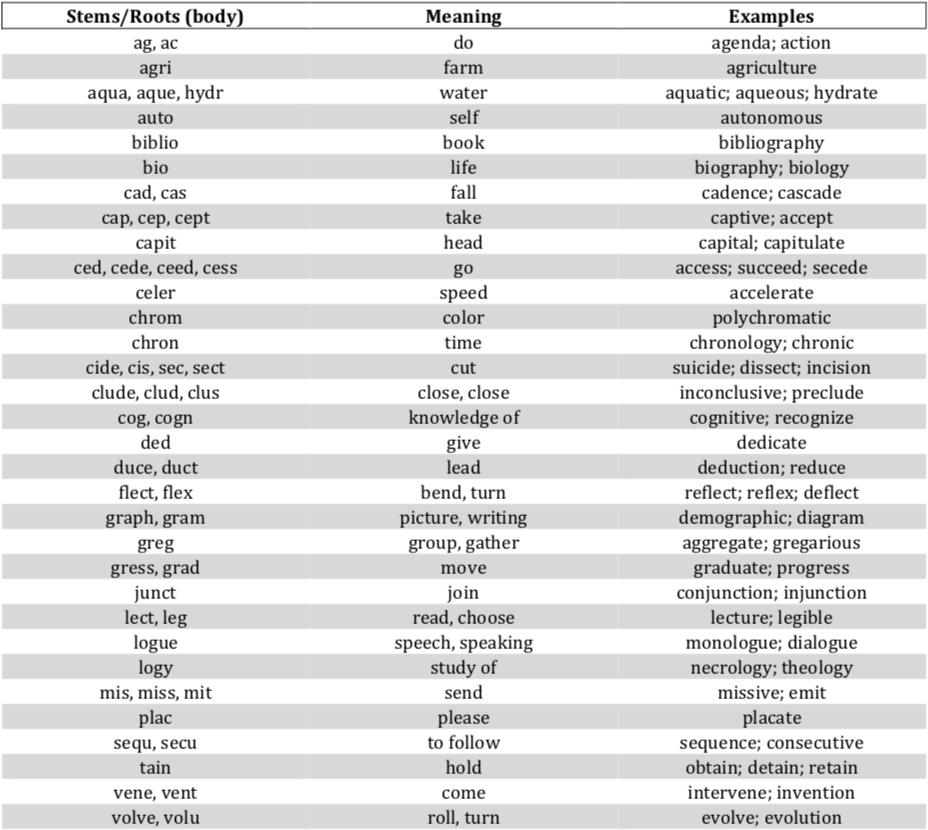
Table of Popular Suffixes
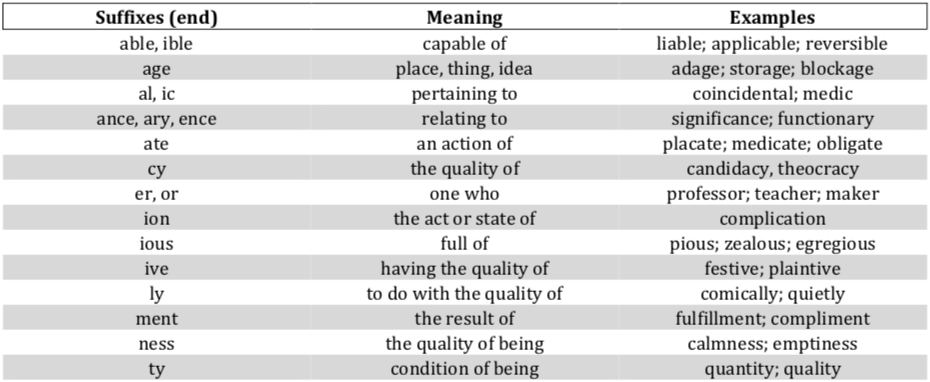
Sentence Completions
For Sentence Completions, you must understand the structure of the sentence, know the definition of each answer choice, and decide whether or not each answer choice will fit within the context of the sentence’s structure.
The Design of a Sentence
While Synonym questions focus on your knowledge of words and your ability to decipher the meaning of new words, Sentence Completion questions take it one step more by asking you to apply that knowledge.
Each question will contain a complete sentence with one or two blanks (two-blank sentences are ISEE Upper Level only). You must choose from the answer choices which word or pair of words best matches the context of the sentence.
Students who read slowly need to allot themselves more time for this portion of the Verbal Reasoning section, such as 5 minutes for Synonyms questions and 15 minutes for Sentence Completion questions.
The context of a sentence is how it conveys a thought a particular way. A sentence will convey a beneficial situation through a positive context, or a sentence will convey a harmful situation through a negative context. For example:
- Sheila earned promotion after promotion due to her astounding work ethic.
- The context of the entire sentence is POSITIVE.
- If you earn a promotion, you have shown the company you are capable of more responsibility and pay. Getting paid more is a good thing.
- Thus, we can determine “astounding” is also positive (astounding = amazing).
- Jordan gave a dejected sigh after finding yet another milk carton left in the bread aisle by a customer.
- The context of the entire sentence is NEGATIVE.
- It is likely that the milk in the carton is wasted because milk is meant to be kept refrigerated. The grocery store is losing money and Jordan must clean it up.
- Thus, we can determine “dejected” is also negative (dejected = very unhappy).
Several of the sentences will kick it up a notch by starting positive then ending negative, or vice versa. For example:
- Despite being a dexterous gymnast, Paul’s scores at the tournament were abysmal.
- The context of the sentence starts POSITIVE then finishes NEGATIVE.
- The key word for this sentence is “Despite,” which signals a change will occur after praising his ability as a gymnast.
- If his abilities were praised at the start and “Despite” signals a change, then the second portion of the sentence must refer to scoring poorly at the tournament.
- Thus, we can determine “dexterous” is positive while “abysmal” is negative (dexterous = skilled; abysmal = awful).
- Although Lilly had been reticent around other people in the past, Lilly grew into a gregarious individual after taking up and competing in volleyball.
- The context of the sentence starts NEGATIVE then finishes POSITIVE.
- Another key word, “Although” signals a change in tone will occur.
- Lilly took up volleyball in the second portion of the sentence, a team oriented sport. Communication plays a heavy role in these types of sports, which means there must be a relationship between “gregarious” and the nature of volleyball.
- If the second half refers to communication, then the first half must refer to Lilly’s lack of communication.
- Thus, we can determine “reticent” is negative while “gregarious” is positive (reticent = quietly reserved; gregarious = sociable).
Sentences that change context can be difficult to decipher, but the logical relationship between words, such as the key words mentioned in the examples, can help:
Systematic Approach to Sentence Completion Questions
For example (note that two-blank sentences are ISEE Upper Level only):
- The lawyer __________ his opponent when his opponent attempted to use __________ evidence to question the witness.
- bartered — complacent
- consoled — relevant
- lambasted — irrelevant
- praised — tangible



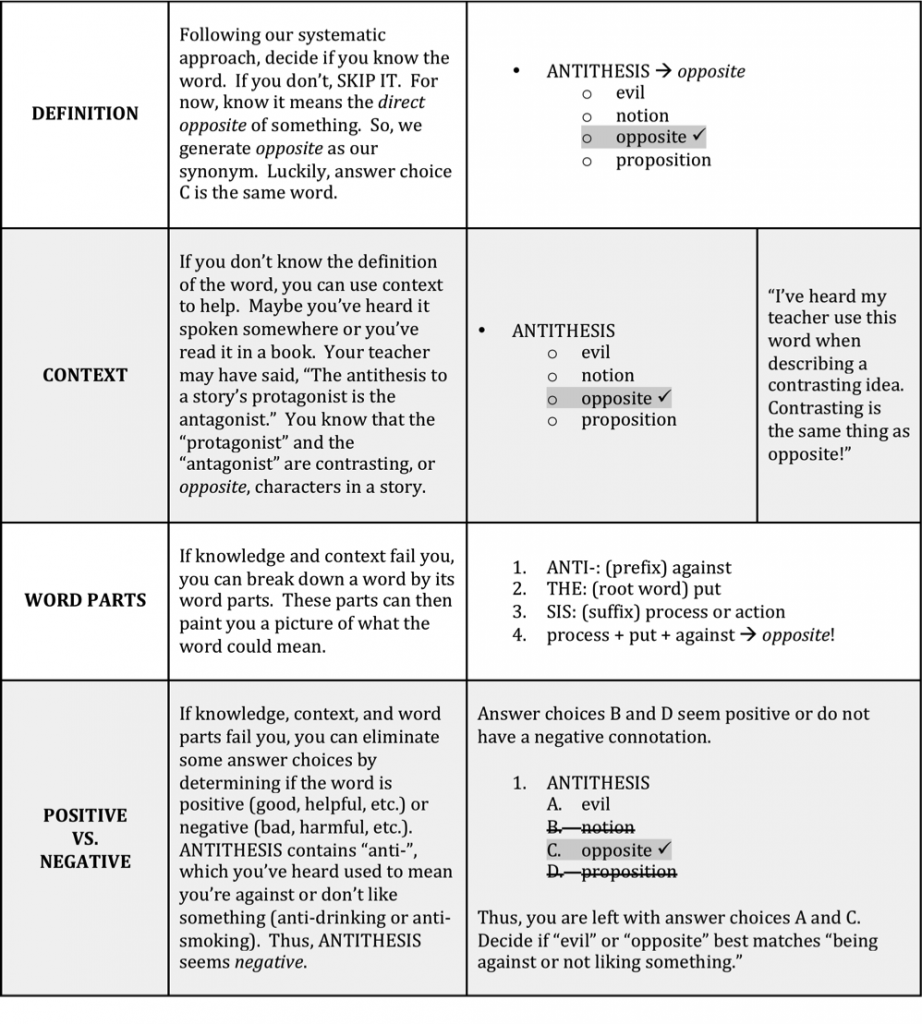
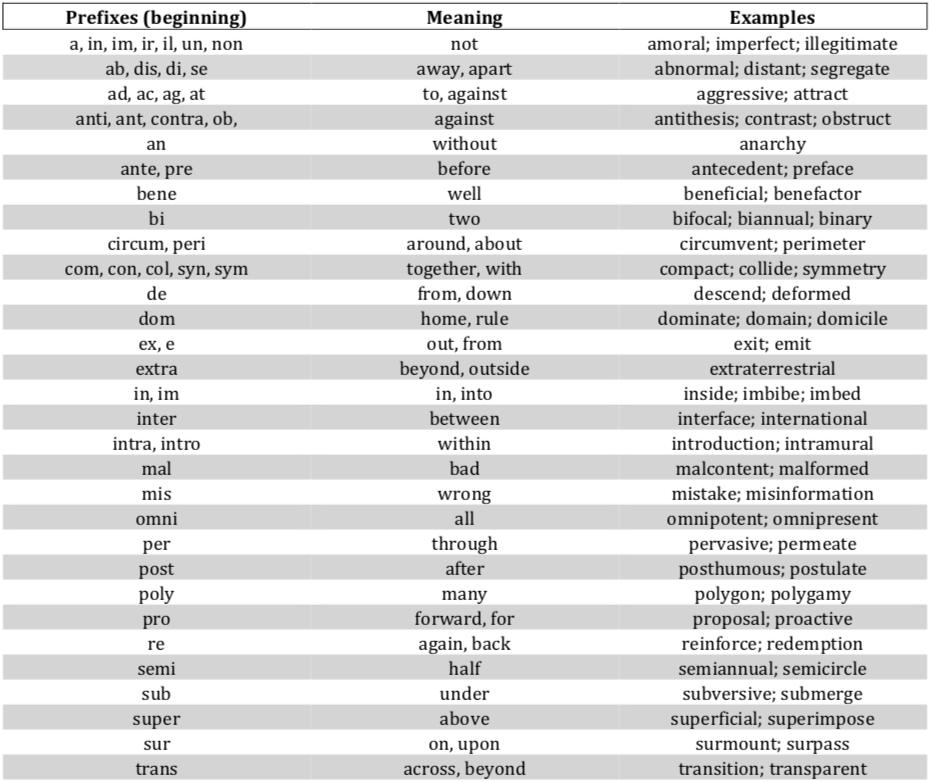
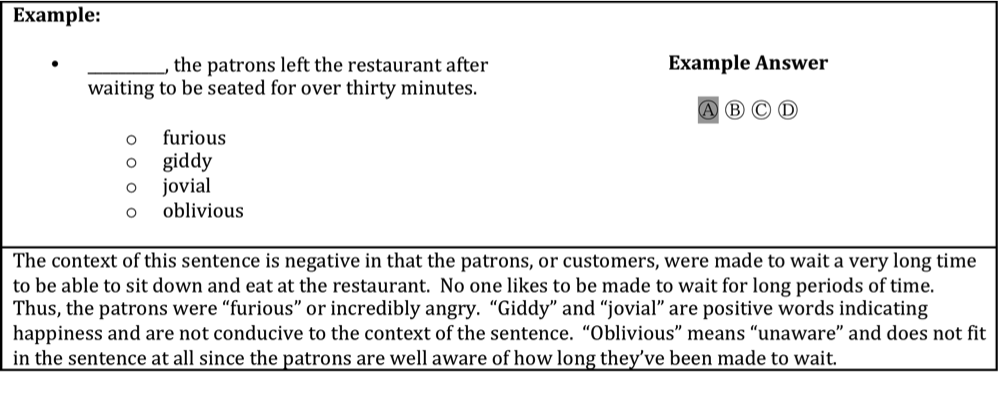
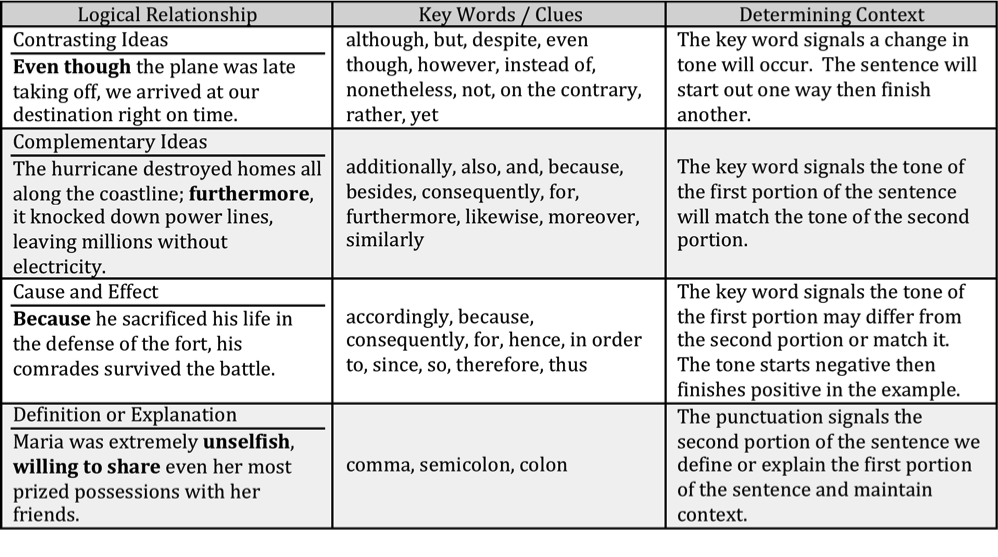
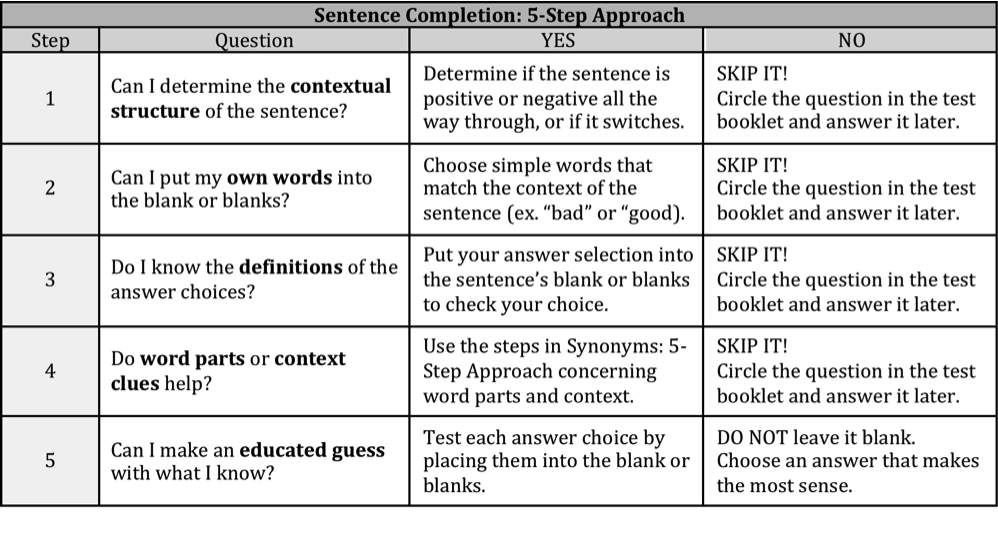
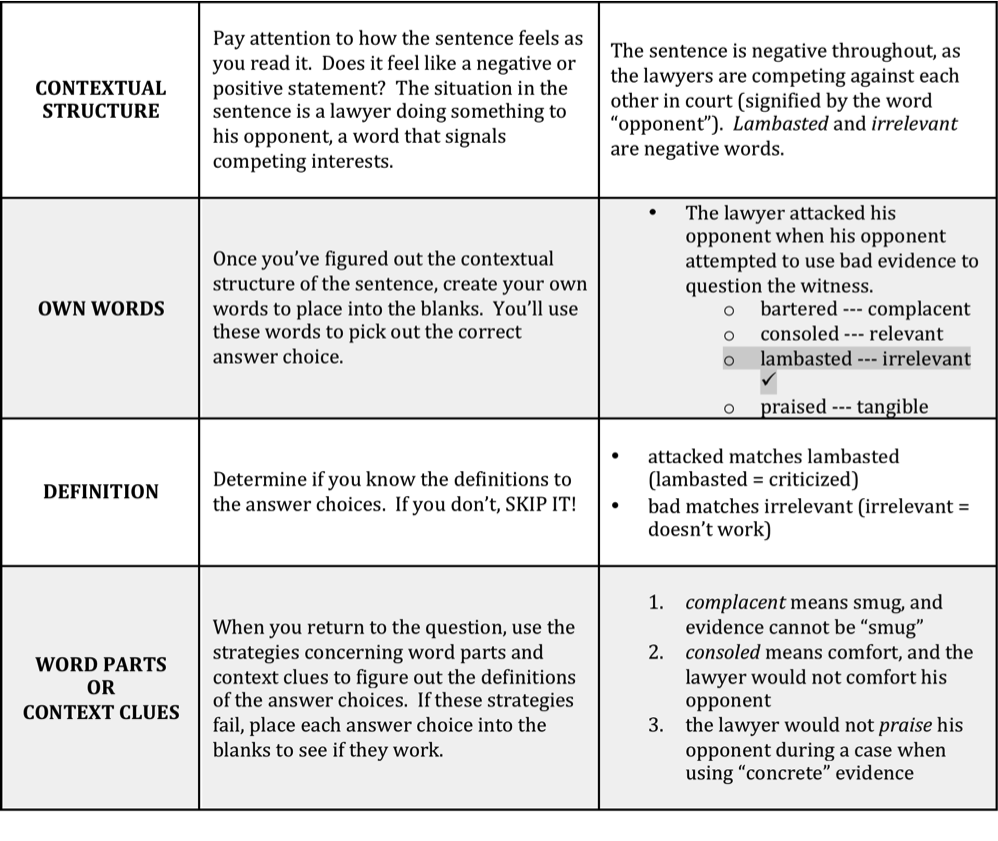
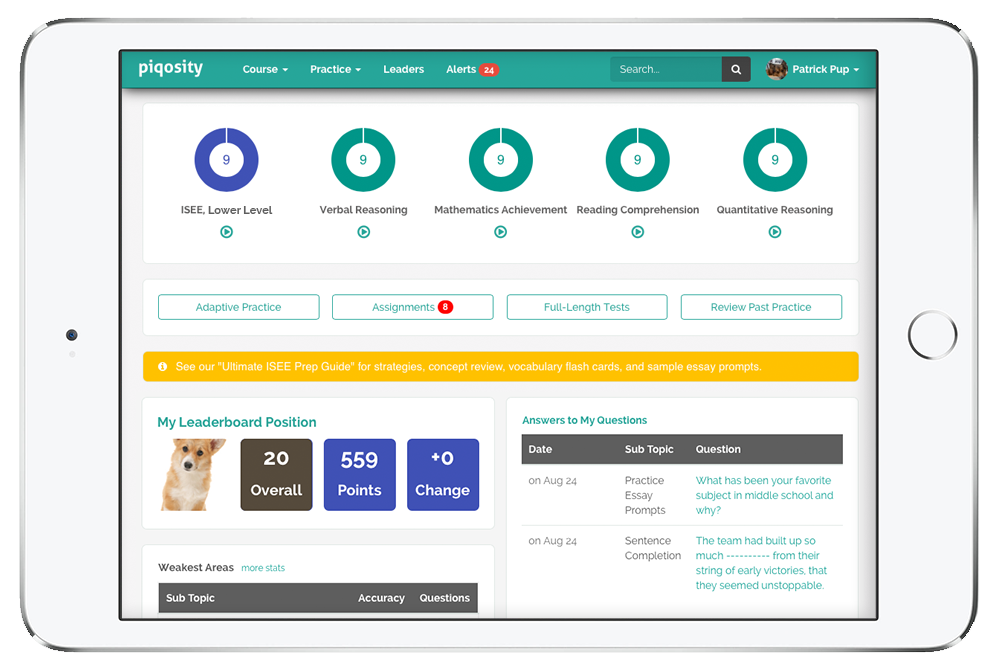 Full-Length ISEE Practice Tests
Full-Length ISEE Practice Tests